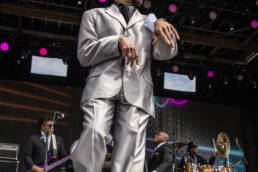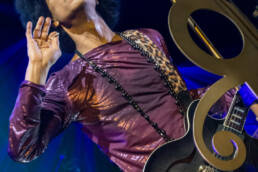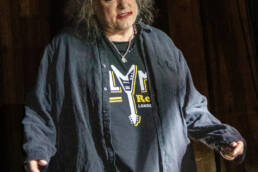Chuck Berry: The Rift that Rocked the World
Chuck Berry: The Riff That Rocked the World
The Spark That Lit the Fire
Picture a kid in St. Louis, strumming a borrowed guitar in the shadow of a segregated America, dreaming of a sound that’d break every rule. For Charles Edward Anderson Berry, born October 18, 1926, music was escape and defiance fused into one. Raised in a middle-class Black family, he found his voice in the church choir, but it was the blues—gritty, electric, untamed—that grabbed him. A teenage stint in reform school after a joyride gone wrong could’ve derailed him, but instead, it sharpened his edge. By 1952, he was gigging in clubs, mixing country twang with R&B swagger. The thrill of a crowd roaring back? That was the jolt that made him chase music—not just to play it, but to own it.
The Man Behind the Duck Walk
Chuck’s story starts in The Ville, a St. Louis enclave where his dad built houses and his mom kept the faith. A scrappy kid with a knack for trouble, he landed in juvie at 17, emerging with a hunger to prove himself. Post-high school, he juggled factory jobs and hairdressing ‘til music called. In 1953, he joined the Sir John’s Trio, turning it into the Chuck Berry Combo with Johnnie Johnson on piano. A 1955 trip to Chicago introduced him to Muddy Waters, who pointed him to Chess Records. One audition later, “Maybellene” was born, and Chuck became rock ‘n’ roll’s architect—duck-walking, riff-slinging, and all. A relentless road warrior, he played ‘til his final days, dying at 90 on March 18, 2017, a legend who never stopped.
The Career That Built Rock ‘n’ Roll
Chuck’s career was a one-man band with a rotating cast. The Chuck Berry Combo—often Johnnie Johnson (piano), Ebby Hardy (drums), and Willie Dixon (bass)—laid the foundation. No fixed lineup, just Chuck’s vision: razor-sharp guitar licks and tales of cars, girls, and rebellion. Hits like Roll Over Beethoven (1956), Rock and Roll Music (1957), and Johnny B. Goode (1958) defined a genre. He never stuck with one band long—solo was his game, though he jammed with everyone from Keith Richards to Bruce Springsteen. His influence? Priceless. The Beatles, Stones, and Beach Boys all cribbed his playbook.
His prime collaborators? Johnson’s boogie-woogie keys were the secret sauce on early cuts. Relationships? His 1986 collaboration with Richards for Hail! Hail! Rock ‘n’ Roll—a tribute film—turned tense; Chuck punched him over a quip. Onscreen, he stole scenes in American Hot Wax (1978) and The T.A.M.I. Show (1964). Awards? Grammys eluded him ‘til a 1984 Lifetime Achievement nod, but the Rock and Roll Hall of Fame tapped him in 1986—its first class.
The big songs? “Maybellene” (Berry, 1955)—a revved-up race to No. 1. “Roll Over Beethoven” (Berry, 1956)—a cheeky middle finger to classical snobs. “Johnny B. Goode” (Berry, 1958)—the ultimate rock anthem, semi-autobiographical. And “Sweet Little Sixteen” (Berry, 1958)—a teen-dream bop that surf rock stole.
The Shadows That Followed
Chuck’s life was a lightning rod. In 1959, he was nabbed under the Mann Act—transporting a 14-year-old Apache girl across state lines after hiring her as a hat-check girl. He claimed innocence; the courts didn’t buy it. Three years in prison followed, a stain that fueled “racist justice” debates. In 1979, tax evasion landed him another stint—four months, community service, and a bruised rep. Then, in 1990, a bombshell: women sued, alleging he’d hidden cameras in his restaurant’s bathroom. He settled out of court, denying it all, but the headlines screamed “pervert.” Fans split—some saw a flawed genius, others a fallen idol. Yet his stage strut never faltered, a middle finger to the chaos.
Chuck Berry’s tale is raw, electric, and unapologetic—a man who built rock ‘n’ roll, flaws and all.
———————————————————————————-








